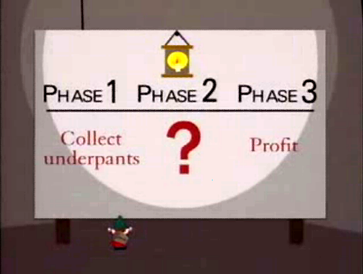When I got married I had a dilemma – how, if at all, should I change my name to reflect my new “status”? Being as my maiden name was
Murphy, I wasn’t too concerned with preserving any cultural legacies or try to keep a family line from disappearing.
I’ve heard tale of a few other Murphys out there.
There was nothing incredibly good or bad about the name
Liz Murphy, it’s a pretty straightforward name. My other option,
Thomas, was straightforward as well. So still no tiebreakers. I had been warned against the hyphen and I didn’t really like those kinds of names anyway. So I still needed a tiebreaker. That’s when I “Googled” my name.
I’m sure many people have done this and depending on how common your name is, most people probably have some doppelgangers out there. Well it turns out that my doppelganger "
Liz Murphy" is also an artist and she makes children’s work. That’s a problem. As an artist myself, if someone were searching for me they might mistake doppel-Liz’s work for mine. So then I tried "
Liz Thomas," and guess what? My other doppel-Liz is a curator of art at UC Berkley! Another problem.
Having a web presence will only work if it is unique. If someone didn’t know me but knew I was an artist who also curates, I could be mistaken with either of these ladies. Which I don’t want, and I’ll assume they don’t want either. It was at this point that I searched for what became my new name,
Liz Murphy Thomas. When I searched for the name in Google, no one came up.
That is until now. Now if you search "
Liz Murphy Thomas," you’ll get several pages worth of links and all of them are me – no doppelgangers.
Right now I am teaching an advanced capstone course for all graduating art majors and one of the requirements is to create a web portfolio. In my opinion, all artists need a website because all artists need a web presence. This isn’t just the domain of graphic designers and new media artists any more. To communicate in the 21st century, is to be a part of social media. A web presence is integral to being a part of social media. Artists have always struggled with representation and distribution, and what cheaper way is there to disseminate your artwork than on the web? Sites like
Artist A Day and
MYARTSPACE will even help distribute your work even further.
If you haven’t yet, Google your name. Are you one of the top hits? Are you in there at all? Having a web presence will only work if people can find you – so what can you do today to develop your unique web presence?

























